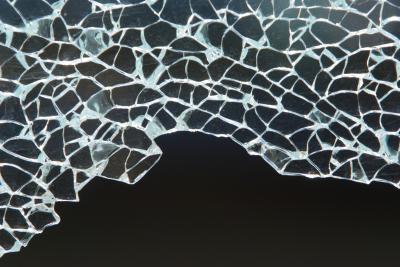
There was a time when possibly the most dangerous part on any car was right in front of the driver's face. Manufacturers tried a lot of things to keep unsecured drivers from getting decapitated in a collision, including windshields that popped out when hit from behind, and hardened glass that shattered easily. Of course, shattering easily isn't a particularly good thing in anything but emergency situations, so manufacturers turned to the French for an engineering solution.
Windshield glass is different from the glass in your other windows. Most of your car windows are tempered glass like the glass Ford once used for windshields. Tempered glass is heat-treated to create a thin layer of very hard -- about a 7 on the MOHS scale -- and scratch-resistant layer of material on the surface the window glass. The inside of the pane remains soft, though. This places the whole pane in a state of static tension; break the tension on the hard surface layer by lightly tapping it with a harder material, and the window explosively shatters into tiny pieces.
Obviously, a material easily shattered by a tiny pebble isn't ideal for a windshield. However, non-heat-treated glass tends to break into large, sharp spears. The French solved this problem by using two panes of standard glass sandwiching a thin layer of clear plastic. The standard windshield glass is softer -- about a 6 to 6.5 on the Mohs scale. But when hit, the plastic sheet holds the large pieces of glass in place and keeps them from injuring the driver. Ultimately, the windshield glass is a bit softer than the side glass, so it scratches more easily. However, it's far less resistant to shattering when hit with road debris, and windshield glass is still hard enough that a razor blade shouldn't scratch it.